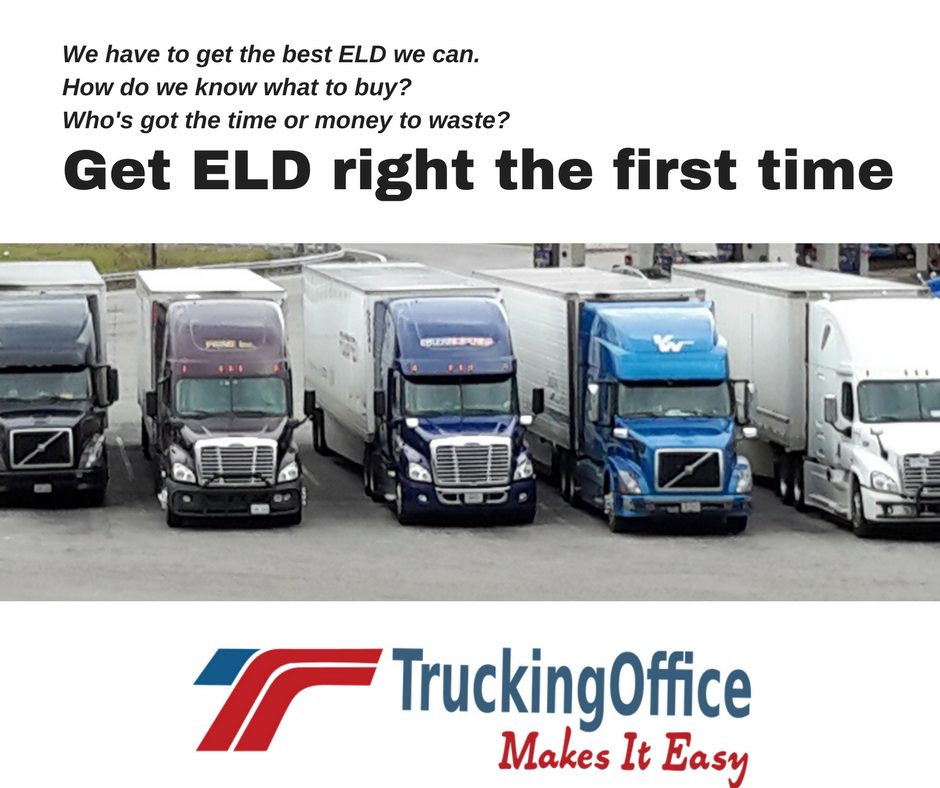Are you asking yourself, what does ELD mean? You’re not alone. This simple term is causing a lot of waves in the trucking world. In this post, we’ll explain the basics of ELDs and why they’re important. We think you’ll be pleasantly surprised when you learn the answer.
Less Hassle, More Money
Paper logbooks were long the bane of the transportation industry. Filling them out required precious time taken away from driving. Making serious errors was easy, especially when the driver was fatigued after a long haul. And we all know the stories of dispatchers who misused the old paper-based system to harass truckers.
An ELD (electronic logging device) frees hard-working people like you from all these hassles. It’s a simple, error-free product that performs the following tasks all on its own:
- Tracking a driver’s hours of service (HOS).
- Talking to your truck’s engine to ensure absolute accuracy.
- Creating a permanent record that will protect you from false accusations of negligence.
An ELD gives truckers like you a well-deserved helping hand while ensuring you’re never forced to violate regulations or endanger public safety. That, in turn, makes life better for everyone who uses our nation’s roads.
How Does an ELD Work?
An ELD is an electronic device that enables truck drivers to accurately record their driving hours. Furthermore, it documents their compliance with Hours of Service (HOS) regulations. The electronic logging device plugs into a port located under the dashboard. It syncs with the truck’s engine to record all driving activities throughout the day. This allows drivers to forgo the paper logs that were once a mainstay in the trucking industry. The ELD also tracks the total number of miles driven in each jurisdiction and state, to make it easier for trucking companies to calculate IFTA fuel tax reports. As per the ELD rule, ELDs are now a requirement for most commercial vehicles.
The ELD mandate put in place by the Federal Motor Carrier Safety Administration (FMCSA). It enforces the federal hours of service law, which dictates how many hours truck drivers can drive and when. According to ELD standards, drivers cannot drive for more than 11 hours during a 14-hour period. The ELD mandate is intended to help drivers more easily track their hours. Also, it prevents driver fatigue and making U.S. roadways safer. Many truck drivers have mixed feelings about the law. Some say the ELD mandate makes their jobs too inflexible and others say it makes their jobs more dangerous and stressful.
Understanding the ELD Mandate
The ELD mandate is a federal regulation requiring operators of commercial motor vehicles covered by the law to transition from traditional paper logbooks to electronic logging devices, or ELDs. The ELD mandate became law on February 16, 2016 and the compliance date for using an electronic logging device was December 18, 2017. The FMCSA, an agency within the Department of Transportation (DOT), gave trucking businesses using older Automatic On-Board Recording Devices (AOBRDs) until December 16, 2019 to get compliant with the ELD standards. As of December 2019, all covered commercial trucks are required to use an ELD in their vehicles to track driver hours.
ELD Meaning for Drivers
Ensuring Hours of Service (HOS) compliance is the driving force behind the mandatory use of an ELD in commercial trucks. With ELDs in their vehicles, drivers are restricted to the maximum number of hours they are legally allowed to drive between rest periods. The purpose of the ELD mandate is to replace paper driver logs and AOBRDs with automated technology. Additionally, the technology electronically tracks driver hours, thereby ensuring accuracy. Traditional paper logbooks were notoriously inaccurate, either because drivers miscalculated their hours or because they were pressured by employers to manipulate them.
By replacing manual logbook entries with electronic ELD records, the federal government expects to reduce the risk of trucking accidents caused by driver fatigue. Sitting behind the wheel of a truck for hours at a time can be physically and mentally exhausting. Furthermore, studies have shown that driver fatigue is a major factor in accidents involving commercial trucks. Awareness of this problem resulted in a federal restriction on driver hours of service and ultimately led to the ELD requirement, which ensures that driving hours are not exceeded.
Let’s Set the Record Straight
Sometimes when people ask, what does ELD mean, they hear many rumors and wild claims. So, let’s clear the air by laying a few of these misconceptions to rest:
- An ELD doesn’t allow Uncle Sam to spy on you, nor does it enable dispatchers to harass truckers. To the contrary, it protects drivers by ensuring there is always an accurate record of your job performance that you can reference.
- ELD will not affect your fuel economy, and it will not cause mechanical problems with your rig. It simply doesn’t work that way.
- An ELD will not make your life more complicated or your job more stressful. If anything, it will enable you to make more money by freeing you from maintaining those old-fashioned paper logbooks that take up so much of your time.
So, now you know the answer to the question, what does ELD mean? While on the subject, we should mention that our TruckingOffice software can make every aspect of running your business easier, whether you have one truck or 1,000. Take it for a free 30-day test drive starting today.







DOES A COMPANY RUNNING ON SHORT HAUL HAVE TO HAVE ALEAST A ELD OR AOBRD TO OPERATE TO KEEP UP WITH THE HOS WHILE DRIVING A TRACTOR TRAILER